Newly-founded American Women in PR wants PR to be seen as a “profession” and not as an “industry.” It wants equal pay/titles with men. Organizational skills are needed for that to happen.
AWPR, with $300 yearly dues, is up against PR groups that already have large female memberships—PR Society of America, Int’l Assn. of Business Communicators and New York Women in Communications. Members total 21,000, 10,000 and 2,000+, respectively. About 80% or more of such groups are women. Dues are $255 at PRSA and $254 at IABC plus chapter dues.
 |
Why start a new national organization to pursue goals of PR women when there is already one that is well-funded and has 80% women members—namely, PRSA?!
With its $5.1 million in current assets including $5.5M in investments, $1.3M in cash, and a staff of 50+, PRSA could press for equal pay and titles for women, the top goals of AWPR.
NYT, PR Council Could Help
AWPR needs to get its message out, and we suggest the New York Times and PR Council as partners.
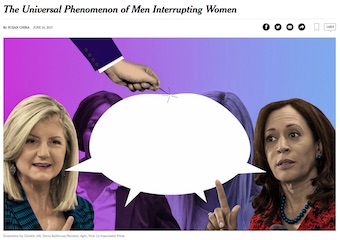 |
Pressing for equality for women is one of the main editorial thrusts of the paper. A June 15 feature titled “Women Interrupted” had examples of men interrupting women in business situations. It notes that women are only 6.4% of Fortune 500 CEO officers and only one-fifth of board members. They comprise 19.4% of Congress. Writer Susan Chira should be contacted.
PR Council president Renee Wilson in March unveiled “The SHEQUALITY Project” that will “help women executives to rise in the ranks of PR firms” and create “a consistent pipeline of strong women leaders.” Project leader is Maureen Lippe, CEO of Lippe Taylor, who said the goal is to “bring top women leaders together to network.”
Another ally would be the Museum of PR which staged the inaugural “PR Women Who Changed History” program at which Wilson and others spoke.
Muriel Fox, a founder of the National Organization of Women, called on women to “stand out in a very crowded field.” The program was devoted to boosting the pay and status of women in PR. Other panelists were Anne Bernays, daughter of Doris Fleischman and Edward Bernays; Karla Gower, Ph.D, advertising and PR department, University of Alabama; Meg Lamme, Ph.D., professor of PR, University of Alabama, and Karen Miller Russell, Ph.D., professor of PR and media historian, University of Georgia.
Men Dominate PRSA Staff
The PRSA staff, despite the large majority of women members, has been headed for 16 of the past 21 years by men—Ray Gaulke (1994-2000); Bill Murray (2007-14), and Joseph Truncale, 2015 to present. Catherine Bolton, hired as “chief PR officer” in 2000, replaced Gaulke in 2001 after he suddenly resigned despite the five-year contract given to him by the 1999 board. That has never been explained. She resigned in 2006.
Betsy Kovacs headed the staff from 1981-93, but that was an era of ethical collapse at the Society. Kovacs marched to the drum of 1980 president Patrick Jackson. Both allowed the illegal sale of hundreds of thousands of copies of authors' articles without their permission from 1978 to 1994 when exposure of the practice by the O'Dwyer Co. ended it.
CEO Joseph Truncale earned $413,973 in 2015, CFO Philip Bonaventura, $281,832, and VP John Robinson, $221,724. Those were the top three paychecks. Payroll totaled $5.7M, up 8.3% from 2014.
This gives an idea of what it costs to staff a national org. Rent on the Society’s new h.q. at 120 Wall st., a 15-year deal inked without membership consultation or a vote in the Assembly is $700K+. AWPR does not yet have an office or paid staff.
Women Lost Control of PRSA Board
Astoundingly, the 2017 PRSA board has nine men and eight women when the 2016 board had 12 women and five men. The 2017 board that was elected had nine women and eight men. But one woman, Joyce Lofstrom of HIMSS, Chicago, resigned for no announced reason. She was replaced by Kevin Waetke of the National Pork Board.
This caper could be a wake-up call to the PR women who are now demanding a larger voice in the conduct of PR. Openness and transparency should be hallmarks of a PR organization. The CEO title at PRSA, given to a staffer in 2013, should be restored to an elected member. Staffs of the major professional associations, law, medicine and accounting, are always headed by one of their own professionals.
Leaders of AWPR, including Talia Davis, Dierdre Breakenridge, Rebekah Iliff, Shonali Burke, Shannon Furey and Gini Dietrich, should contact the eight remaining women in the PRSA board and discuss common goals. Gender loyalty should trump organizational loyalty.
•Chair Jane Dvorak, JKD & Co., Lakewood, Colo.
•Debra Peterson, treasurer, CenturyLink, Kansas
•Amy Coward, Palmetto Health, S.C.
•Ronele Dotson, RAD Strategies, own firm in Reno
•Jo Ann LeSage Nelson, Pierce Comms., Albany
•Michelle Olson, Fingerpaint, Scottsdale, Ariz.
•Bonnie Upright, Olympus Foundation, Orange Park, Fla.
•Samantha Villegas, SaVi PR, own firm in D.C. area.
PRSA Leaders Cling to Failed APR Program
AWPR Leaders are going to find at PRSA a group that is not only dominated by men, but is dominated by a “peculiar institution”—accreditation. This is a holdover program from the 1960s when it was thought that the Society could force all members to be APR. Sixteen of the 17 current directors are “APR” although APR members only make up 18% of the membership.
Millions of dollars were thrown at the program by APRs. It lost $2,926,080 from 1986 to 2002 when the budget was cut, and the shift was made to a computer-administered test.
Net cost in 2000 was $411,467 to accredit 234 members or $1,794 for each new APR. This was cut to $352 by 2002 when 411 APRs were inducted at a net cost of $144,679.
The APRs, in power since the mid-1970s, moved h.q. from mid-town to downtown New York in 2004, leaving most of the midtown ad/PR/media business in the dust. Only one national conference has been held in New York since 1992, and none are planned.
APR is about as moribund as any program can be. With at least 17,000 members of PRSA being non-APR, the total of new APRs in 2016 from PRSA and eight other organizations was 150, according to the Universal Accreditation Board. This is a tiny fraction of 1% of PRSA’s membership.
The main bloc at PRSA supporting APR is the educators who prize it as the only credential in the PR industry even though it is self-administered.
Men Fought APR in 2010
Richard Edelman, Art Stevens and Dave Rickey in 2010 headed the Committee for a Democratic PRSA whose aim was to erase APR from the bylaws. Board and staff blocked any mention of the initiative in Social media and would not let the Committee email the membership. Only about 300 signatures were obtained on a petition, and the movement died.
IABC, faced with low participation in its own Accredited Business Communicator program, abandoned it in 2013 after a 40-year run.


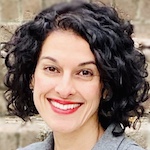 Sherrie Mazur will join the Arthur M. Blank Family Foundation as managing director, of communications on Feb. 14.
Sherrie Mazur will join the Arthur M. Blank Family Foundation as managing director, of communications on Feb. 14. 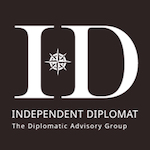 Independent Diplomat, the nonprofit that promotes democracy by organizing opposition movements and activists, has trained its sights on Venezuela.
Independent Diplomat, the nonprofit that promotes democracy by organizing opposition movements and activists, has trained its sights on Venezuela.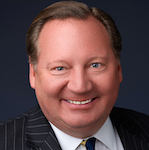 Robert Tappan has joined the International BioMetrics + Identity Assoc., the trade group for the identity technology industry.
Robert Tappan has joined the International BioMetrics + Identity Assoc., the trade group for the identity technology industry.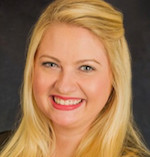 Tiffany Haverly, who was at Finsbury Glover Hering, has joined the Internet Association as director of communications.
Tiffany Haverly, who was at Finsbury Glover Hering, has joined the Internet Association as director of communications.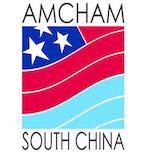 BGR Government Affairs represents the American Chamber of Commerce in South China as economic and political tensions between the two countries escalate.
BGR Government Affairs represents the American Chamber of Commerce in South China as economic and political tensions between the two countries escalate.


 Have a comment? Send it to
Have a comment? Send it to 
No comments have been submitted for this story yet.